Talent Agents
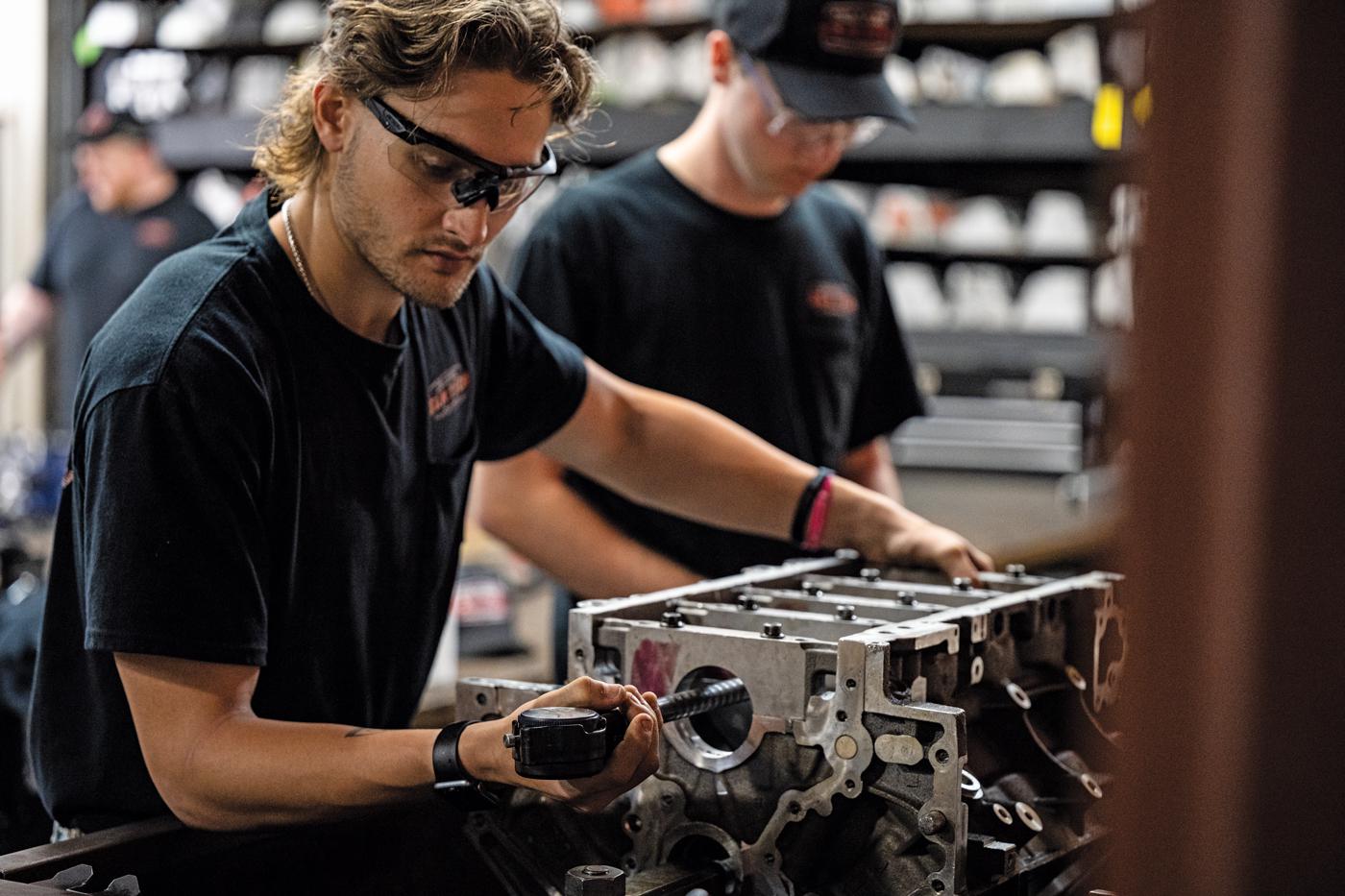
As motorsports and automotive design continues to evolve, educators across the country are laying the groundwork for the next generation of fabricators, tuners, engine builders, and machinists with new outreach strategies as well as a sharper focus on the latest in-demand skills and technologies.
Racing is getting increasingly high-tech across all levels and disciplines, and the demand for specialized skillsets has never been greater. To reach potential students, trade schools have been modernizing their curriculums to stay on top of the latest developments and bringing awareness to the platforms where these folks are already consuming information.
But different organizations have different goals for their programs. While some are primarily focused on job placement soon after graduation, others intend to provide their students with a broader scope of knowledge that will allow them to identify their specific vocational interests within automotive performance and pursue those further.
These differing approaches impact not only a school’s curriculum, but also the inherent designs of their automotive programs and the strategies that they employ in order to get the word out about what they have to offer.
Lanier Technical College
“Our goal is to expose our students to every aspect of being on a race team,” explained John M. Leverett, the director and instructor for the Lanier, Georgia-based school’s Motorsports Vehicle Technology program. “Our program is kind of road racing-centric, but we do also cover aspects of drag racing and other disciplines.”
At the introductory level, Lanier’s program covers a wide scope of topics that range from safety equipment training to programming engine management systems and the use of data acquisition systems, along with engine building, dyno testing, and fabrication. “In addition to contemporary tube notching and bending, we even try to keep some of the old-world traditions like the English wheel alive,” he noted. “Those skills are disappearing fast, and there’s still a demand for it in racing. There are so many different layers to motorsport, and while we can’t make these students experts at every single aspect, we can expose them to all of it to get a better idea of what they want to focus on.”
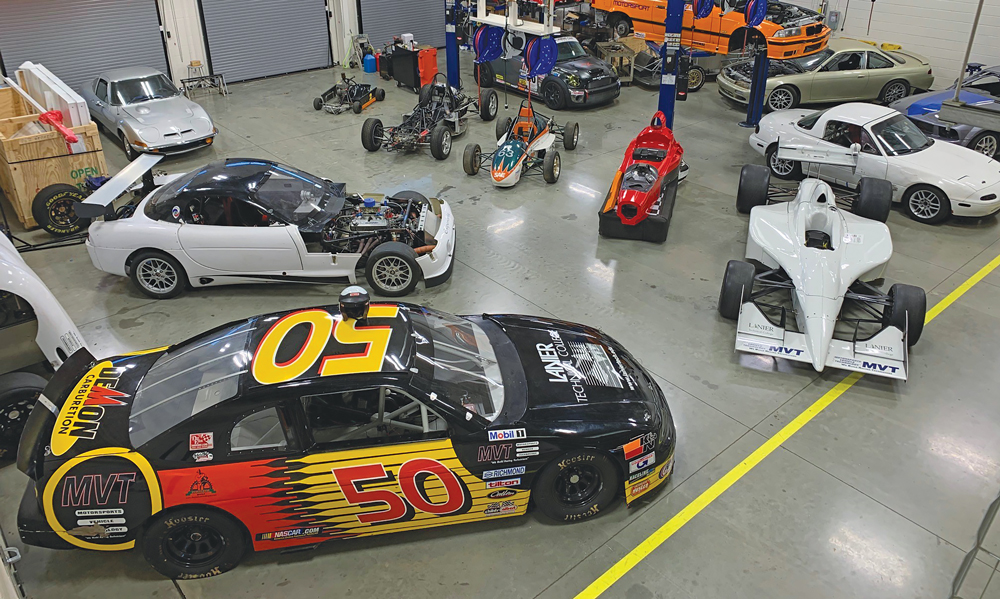
As the former chief engineer for sportscar manufacturer Panoz, Leverett’s background in road racing has helped shape the school’s program, and its close proximity to tracks like Road Atlanta and Atlanta Motorsports Park has played into that as well. In the lab, students have access to production-based racing platforms like the Spec Miata and FR500S Mustang as well as open wheel single-seaters. “We place a lot of our students in IMSA, and there’s just so much road racing going on here in general,” he added. “My job board is packed with opportunities in that realm.”
He noted that other faculty members in the program have backgrounds in drag racing and circle track as well; and with stock cars and vintage gassers among the fleet of project vehicles in the lab, other disciplines are well represented within the program. “We’re able to place students in NASCAR, in drag racing, and other areas of motorsport, but the majority of them end up in road racing. There’s a huge demand at the ‘semi-professional’ level right now. There are a lot of folks who’re putting a lot of money into it, and there are a lot of teams who have stepped up to support them.”
Over recent years, the curriculum has evolved to include a stronger emphasis on technologies like data acquisition, along with EV and hybrid powertrain components, the latter of which is already in use in IMSA racing. “Everything has had to evolve to reflect what’s out there now,” he said. “Data acquisition is basically mandatory now—you’re at least going to have an AiM system in a car. And bringing the hybrid tech in is really important to us. Next year our students will be interning with IMSA teams that are campaigning cars with hybrid technology, so we needed to get that into the curriculum as soon as possible.”
Similarly, while the program’s engine building course focused mainly on American V8s in the past, recent updates were made to provide students with a broader understanding of contemporary powertrain setups. “Now there’s a stronger emphasis on engine platforms like the Mazda MZR, which we were able to get from Formula Enterprise cars when they changed the engine spec for the series,” Leverett said. “These smaller displacement engines are becoming a greater and greater presence within motorsport and elsewhere. We also spend a lot more time talking about forced induction since that has become a huge part of the current crop of engine combinations.”
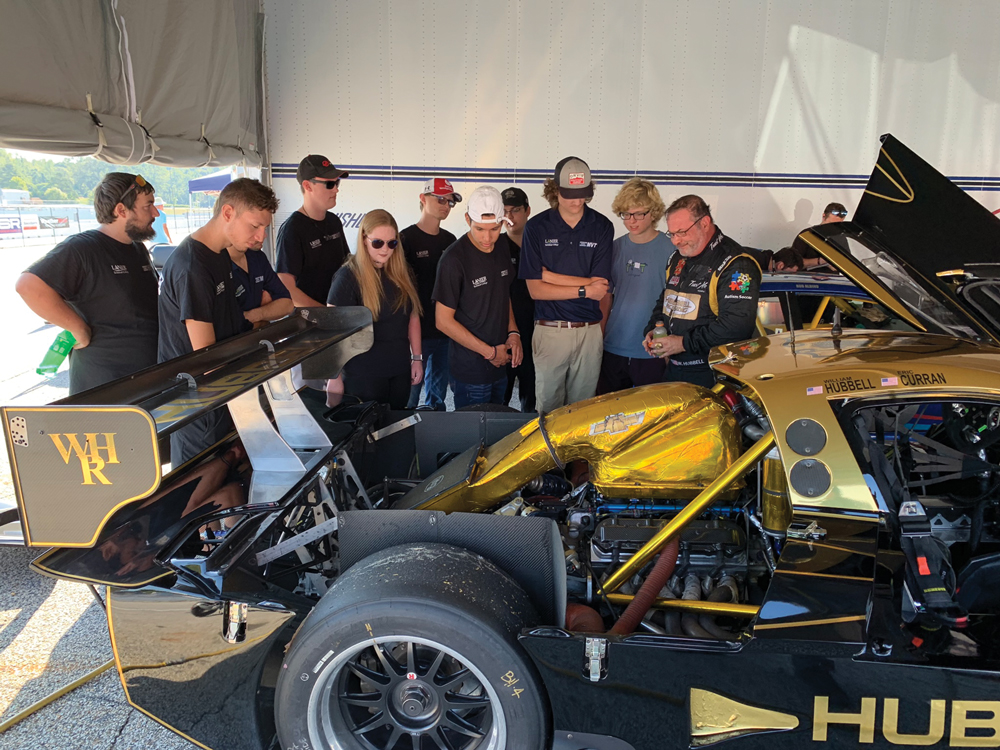
As a state-run program, Lanier’s Motorsports Vehicle Technology curriculum sees many in-state students coming in directly from high school. For those students, a two-year associates degree can be had for less than $8,000. Some also come in by way of the GI bill, while others have transferred in from four-year schools after realizing that they wanted to make cars go fast.
“Our motorsport program is relatively unique in the country, so there’s a national appeal,” Leverett said. “We’ve been getting more and more students from out of state coming into the program when they discover it.”
That discovery is often made through word-of-mouth, since most of this non-profit school’s marketing is focused on local enrollment. “The only practical way we can get the word out about our program on a national level is through social media platforms like Facebook and Instagram,” he said. “But word-of-mouth also goes a long way in motorsports—it’s just how this industry works.”
WyoTech
Along with WyoTech’s general automotive curriculum, the school in Laramie, Wyoming, offers two specialty programs that are specifically catered toward performance. After students complete the school’s automotive technology core program, they can opt to focus on performance-related topics through the Street Rod program, which gives students an overview of bodywork and fabrication, and the High-Performance Power Trains program, which provides greater insight into tuning engines for peak power and efficiency. WyoTech’s format deviates substantially from schools like Lanier in that the school takes nine months to complete from start to finish, and primary educational goals are different.
“The idea is to get these students prepared for a job in the automotive industry right after they complete the program,” explained Ashley Chitwood of WyoTech. “There’s an unprecedented demand right now. We can’t guarantee jobs to these students, but if you can’t find work in this industry after graduation, you’re probably doing something wrong.”
Chitwood noted that many of WyoTech’s students are also interested in starting companies of their own, so the school also offers courses that focus on the fundamentals of operating a business. “They have access to all of these different things, but each student has their own path.”
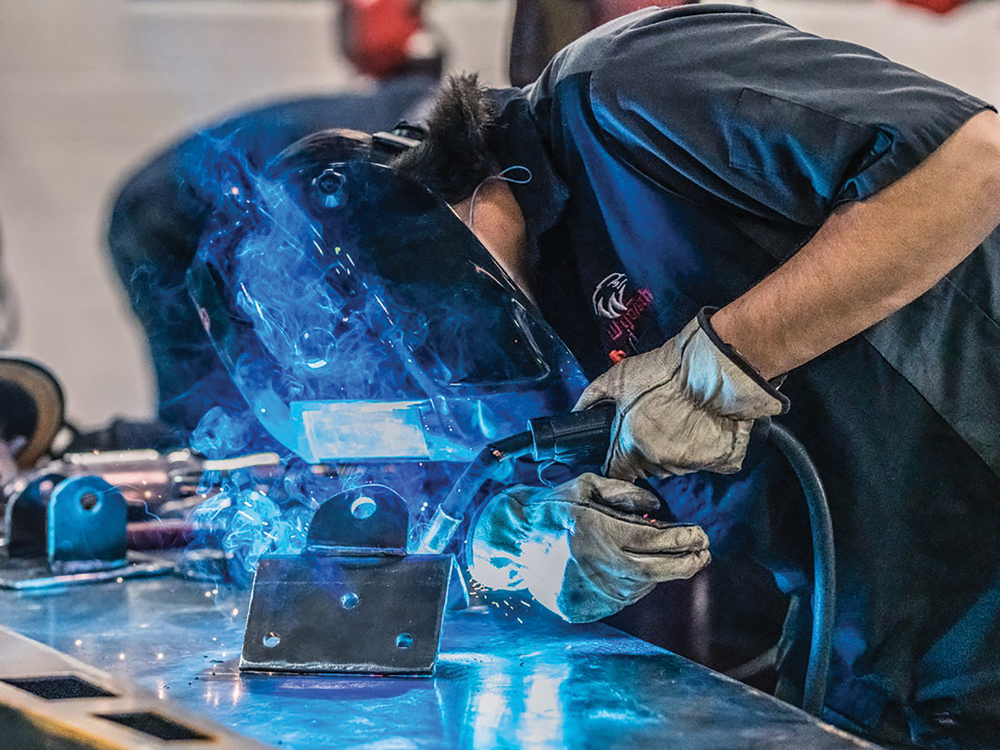
Those primary goals also impact the school’s curriculum, which is less about the technology that’s coming down the road and more about what’s in use right now. “EV is a conversation that has come up a lot in our program advisory committees,” she said. “We have people from the industry come in and discuss the curriculum with us, and that allows us to better understand what the industry needs right now. EV is a hot topic in the media right now, but we have to weigh that against the fact that these kids are going to be getting jobs in the next nine months. There are components of our automotive technology core program that cover the basics around EVs and electrification, but we have to consider what skills and knowledge they’re going to need to have to do the duties that are required today.”
As the school requires a full-time commitment, the majority of WyoTech students enter the program directly after high school, and the organization sees interest from across the country. “We have so many students interested in automotive performance right now that we’re booking out these classes a year in advance,” Chitwood said. While some students cover tuition through the GI bill, many are reliant on their parents to foot the bill, so WyoTech’s marketing strategies are just as much about engaging mom and dad as they are about the prospective students. “The families are starting to see that there are lucrative pathways in trade schools.”
At the same time, WyoTech is also focused on reaching those would-be students where they’re already engaged. “The older strategies don’t work anymore,” she noted. “It’s quickly shifting away from things like Google Ads—these 14- to 18-year-old kids aren’t consuming information that way. Many of our students hear about us through TikTok. Currently we’re not spending money there, but we are producing content for that platform as well as Instagram and Snapchat. I think what we’ve learned is that you can’t be so prescriptive about your marketing approach anymore. It has to be authentic and relatable. Some of it has nothing to do with what we offer in the shops, but what they see is that we have fun. They see that we have standards and professionalism codes, but that we also have a personality.”
As for how WyoTech’s curriculum will evolve in the coming years, Chitwood expects computer engineering and software development to take on a greater role. “The more technology we put into these vehicles, the more tech-savvy people we’re going to need, and the more these students will benefit from those skills. I don’t think this shift will happen suddenly, but it’s something that we can adapt our programs to over time as that changes.”
South Georgia Technical College
SGTC instructor Kevin Beaver tells us that the motorsports program’s primary goal is to establish foundational knowledge that gives its students the opportunity to figure out which aspect of motorsports they want to pursue further. “We are trying to place them in a job, but motorsports covers such a wide range of different things,” he said from the Americus, Georgia, campus. “That makes it tough for us to teach them everything, but the objective is to give them the skills they need to seek out an entry-level position in the field that they’re most interested in.”
The program’s introductory courses are designed to expose students to all the major systems of a race car. “We’ll go over things like different types of racing engines, chassis, braking systems, fueling, and so on,” he said. “After that we look more specifically into the electronics, which covers topics like wiring, multi-spark boxes, and data acquisition.”
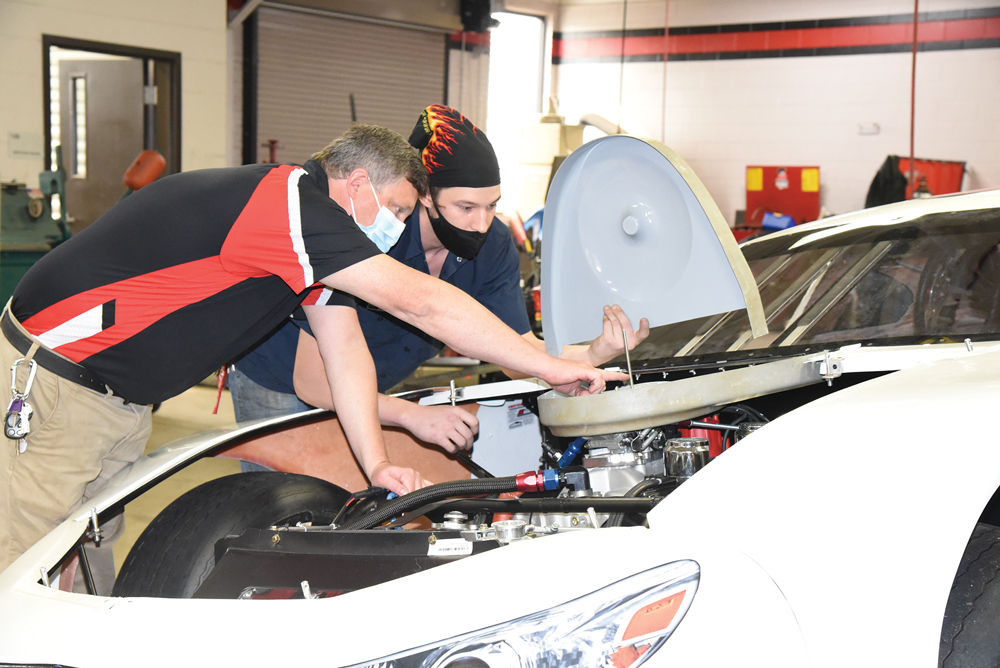
From there the students move onto a machine tool course, which provides them with hands-on education with lathes, mills, band saws, drill presses, and other manually operated machining equipment. An introductory elective course also provides students with access to CNC machines. Completing these machining courses earns those students Technical Certificates of Credit, a certification standard recognized by prospective employers in the industry. The school’s motorsports program also covers engine building and other elements of the powertrain as well as fabrication and welding, and the completion of the latter will also earn those students a TCC.
“The one that’s probably the most fun for them is my race car preparation and testing class,” he said. “That covers everything from how to properly hook up a trailer and strapping a car down to timing and understanding how to adjust to track conditions.” The school’s projects largely focus on drag racing and circle track builds, both racing disciplines that have seen significant evolution in recent years.
“Georgia recently did a state-wide curriculum update, and for us that was about adding some things and taking out what was becoming obsolete,” he explained. “The technology has changed, so we’ve updated our equipment accordingly. For example, before we were using basic timing systems, and now we’re looking at more advanced data acquisition systems that give you this wide range of information. At this level it’s really about giving these students the opportunity to learn how to operate these systems rather than using them to make the car better.”
Beaver noted that as a state-run school, SGTC’s marketing budget is fairly modest, so social media plays a significant role in bringing awareness to their program. “We don’t advertise on national television or anything like that. Word-of-mouth is important, and we also go out to track events, shows—anything car-related where we can have a physical presence locally. We’ll often have a booth set up with a motion simulator that people can try, and that seems to generate a fair amount of interest.”
Over the coming years he expects the program to include a stronger emphasis on automated machining processes as well as engine tuning software platforms like HP Tuners. “That’s where a lot of motorsports is going, so we need to make sure that the curriculum stays relevant.”
Alfred State College of Technology
While some of the students in Alfred State College’s motorsports technology program use it as a route into furthering their mechanical engineering or technical management educational paths, program instructor Andrew B. Smith said that roughly two-thirds of his students are looking to get jobs on race teams or at high-performance shops once they’ve completed their courses at the Alfred, New York-based school. “We have a number of former students working within IMSA, while others are in rally and various other forms of motorsport.”
The two-year program’s initial focus is on the fundamentals, familiarizing students with the key systems of a race car and understanding how they work with hands-on experience in the lab. “Some of that lab work is done out at the track,” Smith noted. “We’ve kind of partnered with American Endurance Racing to allow these students to be pit marshals at the events. Some of them have never been to a race track before entering the program, and most of them have never been involved in any kind of endurance racing before. It not only helps them get a better sense of the racing environment, it also allows them to network with people in the industry. A lot of folks who work for IMSA also race at these events.”
The second year of the program brings a stronger emphasis on motorsport-specific topics like fabrication and welding. “That goes right through TIG welding of aluminum,” Smith noted. “The motorsports fabrication course really shows them how to apply those skills—how to make roll cages, control arms, tube chassis, and exhaust parts. They also learn about destructive and non-destructive testing as well as familiarization with metallurgy and working with composites like carbon fiber.” The chemicals involved in motorsports adhesives, thread sealers, and locking compounds are part of the curriculum as well. The program also offers courses that cover chassis design, car setup, and race suspension dynamics, while others focus on important aspects of motorsports that happen outside of the car—like creating an effective sponsorship proposal.
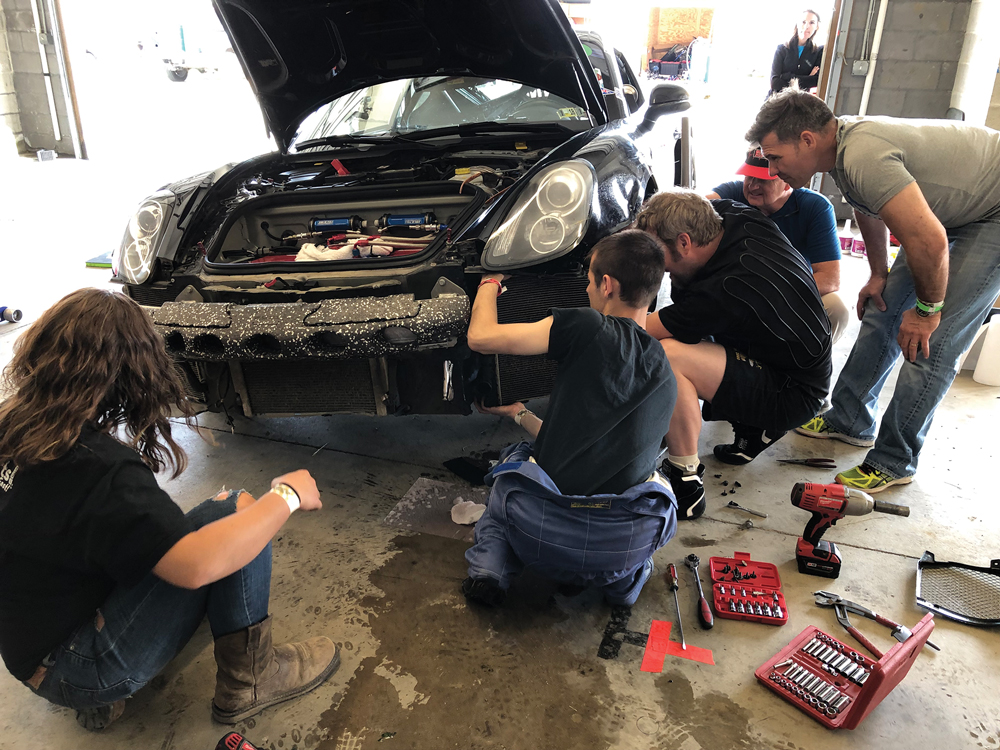
“In the senior year we also teach them some aspects of high-performance driving,” Smith said. “Right here on campus we do a little bit of rallycross for vehicle control, we do some autocross, and we also get them behind the wheel of the Electric Vehicle Sports Racer race car. We feel that it’s important to make sure that these students understand what’s coming with electric powertrains.”
Most of the program’s students are recent graduates from in-state high schools, but the program also sees interest from folks across the country. Part of the appeal of the program stems from Smith’s recent efforts to modernize the curriculum. “Hybrid powertrains are becoming a much bigger part of top-level racing, and one of the big shifts we’ve seen in recent years is that prospective students are asking us if our program includes hybrid and EV technology,” he added.
To meet demand, the school now offers a standalone section course on hybrid powertrains, and the motorsport program has replaced its aging fleet of hybrid project vehicles with newer ones to provide students with contemporary hardware. “These hybrids, along with the electric race cars that we have in the lab, provide these students a better understanding of how these kinds of vehicles are built and programmed, how temperature is managed, and how the battery technology works.”
Like other state-run programs, Alfred State College’s marketing efforts rely largely on word-of-mouth, and students are encouraged to actively engage with the program on social media platforms. “The Facebook page has gained some traction over the past few years, and we also have a small presence on platforms like Instagram and Snapchat,” said Smith. “Lately people have been telling us that they found us by doing an Internet search for ‘Motorsports education in the United States.’ That seems to be working fine for the level that we’re at now. But as enrollment demand continues to increase, I think we’ll eventually reach that next step of growth, and at that point it’ll be necessary to expand those strategies in order to maintain those numbers.”
SOURCES
Alfred State College of Technology
alfredstate.edu
Lanier Technical College
laniertech.edu
South Georgia Technical College
southgatech.edu
WyoTech
wyotech.edu
 MEMBERSHIP LOGIN
MEMBERSHIP LOGIN JOIN PRI
JOIN PRI


